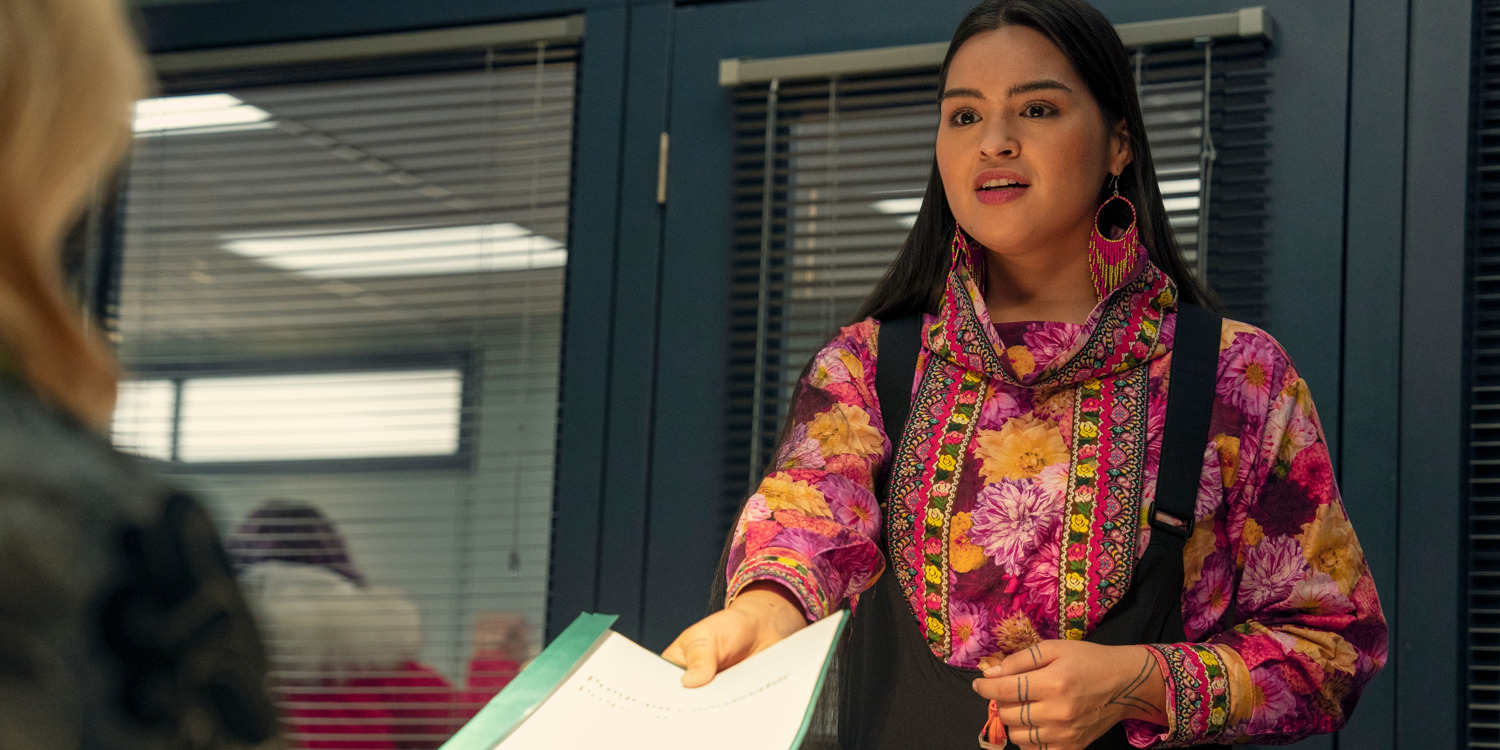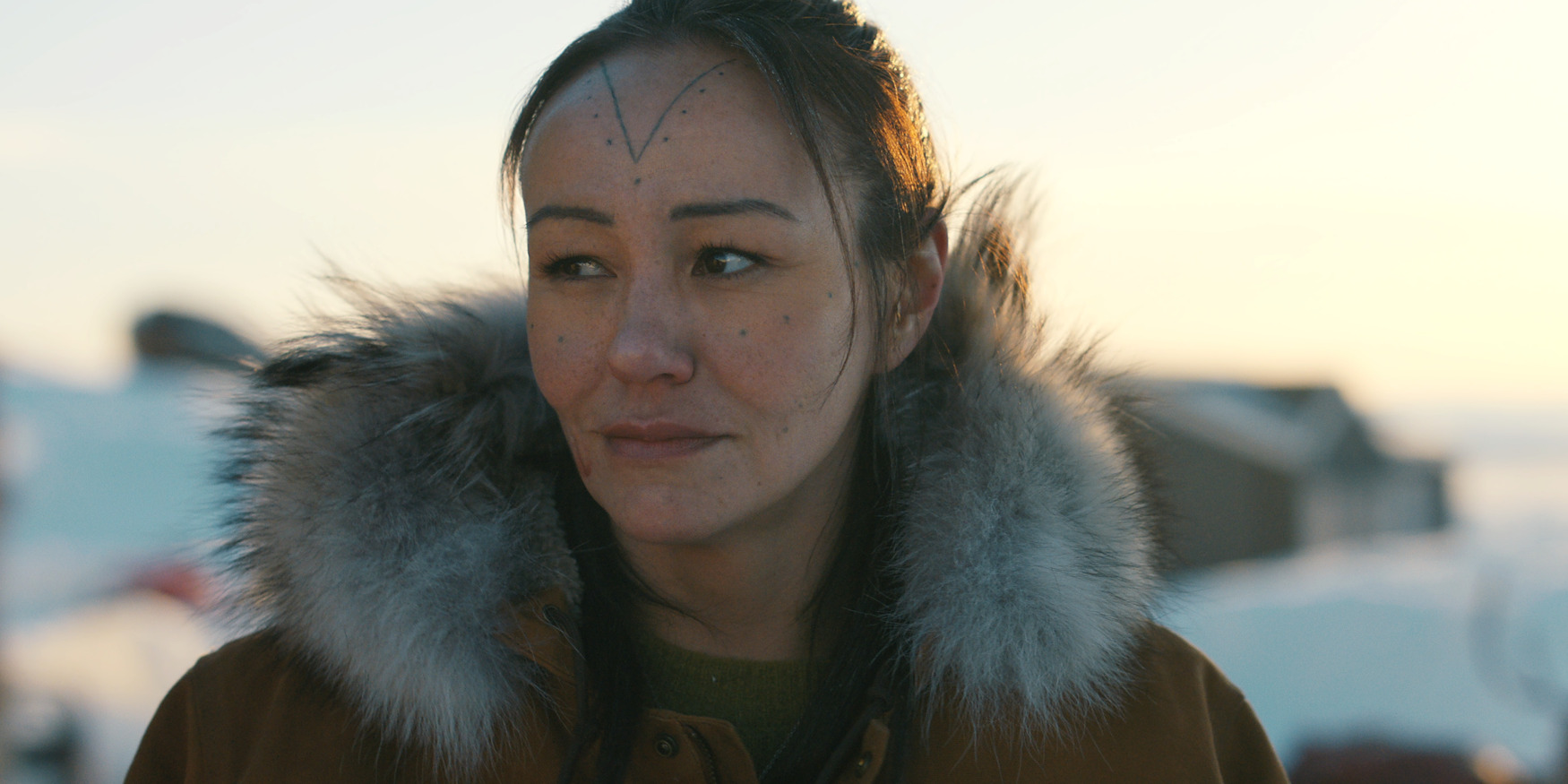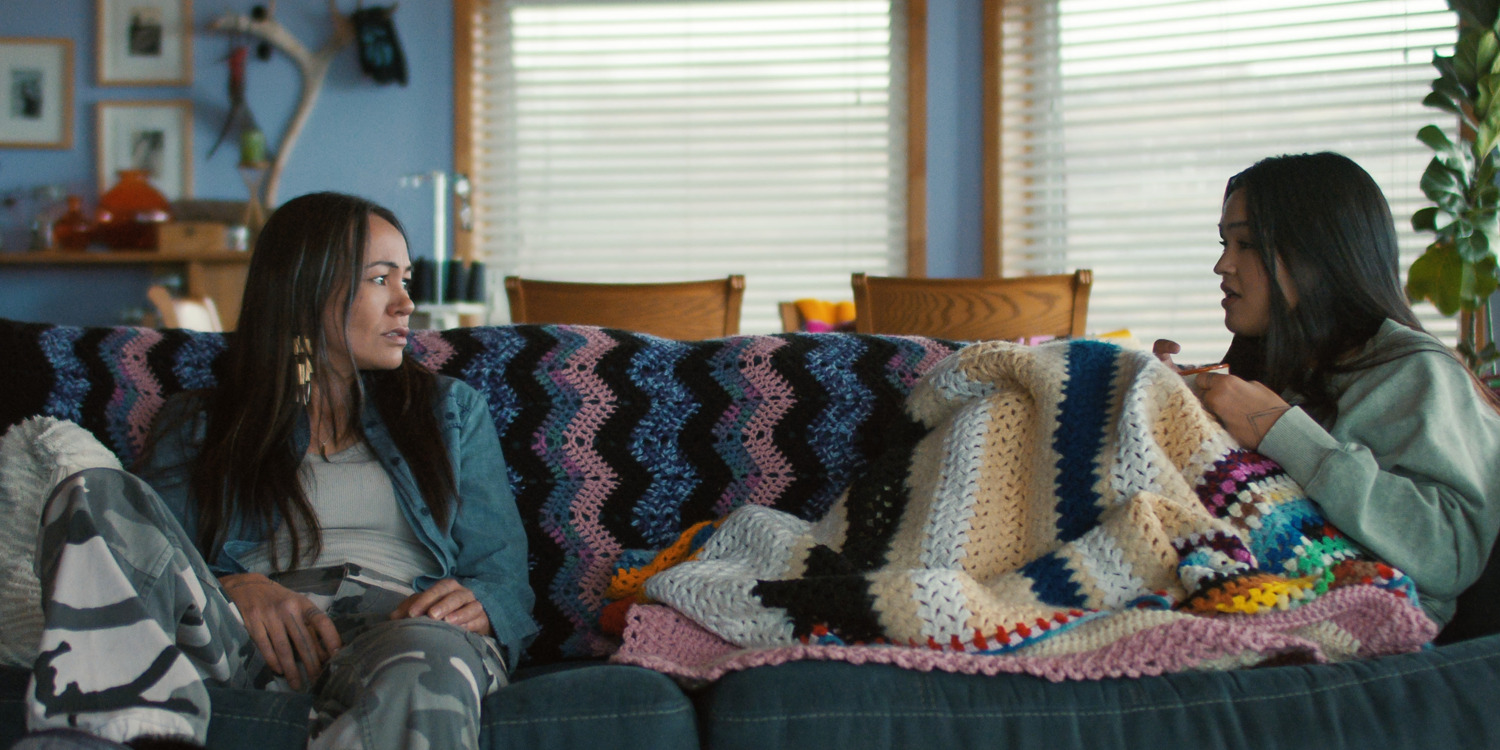Netflix’s ‘North of North’ brings a refreshing tale about reinvention as experienced in the tight-knit Inuk community in the Canadian Arctic’s Nunavut region. The sitcom chronicles the life of Siaja, a modern independent Inuk woman who is starting to realize her life revolves around her husband, Ting, and their daughter, Bun, to a depressing degree. Therefore, she decides to embark on a journey of finding her purpose—a task easier said than done. Nonetheless, despite one public failure after another, the young woman continues to persevere, living out of her mother’s couch and fighting for the assistant job to Helen, the Southerner in charge of the town’s community center.
In this wild ride, Siaja deals with complicated familial relationships, treads on the waters of new romance, and tries to find her true calling. The show, created by Stacey Aglok MacDonald and Alethea Arnaquq-Baril, is a thrilling dive into Inuk culture, presenting its unique quirks and universal relatabilities through the town of Ice Cove. As such, viewers must have found themselves intrigued about the origins of Siaja and her tale.
North of North is Rooted in the Creators’ Personal Experiences
‘North of North’ paves a distinct path as one of the first mainstream sitcoms that focuses on an Inuk community and their authentic realities. Naturally, the crucial sense of realism present in the show and the narratives of its characters emerges from connections to reality. The story’s characters and the details of their plot lines are a work of fiction confined to the screen. Even so, they sport notable inspirations in the real lives of Stacey Aglok MacDonald and Alethea Arnaquq-Baril, as well as their team. The pair of creators previously collaborated on the 2019 biographical sports film ‘The Grizzlies,’ in which they both served as producers.

In the aftermath of this creative collaboration, Aglok MacDonald and Arnaquq-Baril kept in touch and often shared creative ideas for future projects. ‘North of North’ was one such idea that both creators felt very passionate about due to their shared Inuk ethnic identities. Aglok MacDonald is originally from Kuglutuk, Nunavut, and has been living in Iqaluit, the territory’s capital, for some time now. Similarly, Arnaquq-Baril was born and raised in the Nunavut capital. As such, since both women hail from and continue to live in the Artic Inuk town, they were eager to bring their own experiences to the screen.
As such, Siaja’s character and her story—as a modern Inuk woman like Aglok MacDonald and Arnaquq-Baril—came into development. “The idea of wanting to do something fun and funny, a comedy that centers around a young Inuk woman and her family and her community, was the one that really stuck,” MacDonald told Broadview. “We wanted to tell something joyful and fun and beautiful and heartfelt.” Alongside the creators, the show also benefited from the creative input of other Inuk women on the writer’s team and the crew, who poured their own experiences into the characters and their storylines. Therefore, even without a direct biographical connection, the show retains a notable sense of authenticity and realism.
North of North Strives to Represent the Diversity of Inuk Culture
‘North of North’ sports intimate connections to the reality of Inuk culture through the creative voice behind the project. Still, when it comes to the details of the on-screen Arctic Indigenous community, the show undertakes some creative liberties. This is most prominently visible in Ice Cove, the fictional town that is home to Siaja and the rest of the characters. Despite taking inspiration from real-life towns, namely Iqaluit, the story fictionalizes its central town for narrative purposes. This was an intentional creative choice that Stacey Aglok MacDonald and Alethea Arnaquq-Baril equipped.

“We wanted a show that felt real for us—and Inuit (community)—everywhere,” Arnaquq-Baril told Netflix. Her co-creator, Aglok MacDonald, shared the sentiment and said, “We wanted to be able to play with regional differences in clothing and fashion, slang, and senses of humor while not being limited to one exact community. Nunavut is diverse, and Inuit communities differ greatly.” As such, the decision to invent a fictional town in Nunavut aided in bringing this reality of the Inuk community to life. By fictionalizing the town, the creators got to delve into a variety of localized cultures, encompassing both the overarching and individual realities of the Inuit culture.
North of North Touches Upon Relevant Themes Like White Savorism and Generational Trauma
Although ‘North of North’ shines as an everyday comedy about the relatabilities and realities of a small town, the show also doesn’t shy away from the more hard-hitting truths of life. While this manifests in more universally resonant storylines, such as parental issues and marital problems, it also informs the socio-political theme of the show. One of the most significant narrative manifestations of this remains in its grounded depiction of the white savior complex and its demonstration in real life. One of the key characters in the story, Helen, who runs the community center, is a Southerner and a white woman who walks a precarious line between loving Inuit culture and being oblivious to the inherent disconnect she has with its lived experiences.

Although Helen’s character is never heavily antagonized for her indiscretions, her storylines are effectively utilized to showcase an everyday example of what subtle white savorism can look like. Furthermore, the narrative routinely takes the liberty to correct her feats of ignorance, turning them into teachable moments. On the other hand, the show more heavily leans into the strife and largely traumatic reality of generational trauma that continues to affect the Indigenous communities as they carry the weight of years of colonization. Siaja’s character and her relationship with her mother, Neevee, as well as her daughter, Bun, remain an excellent tool for exploring this emotionally demanding storyline.
Read More: North of North: Filming Locations and Cast Details


